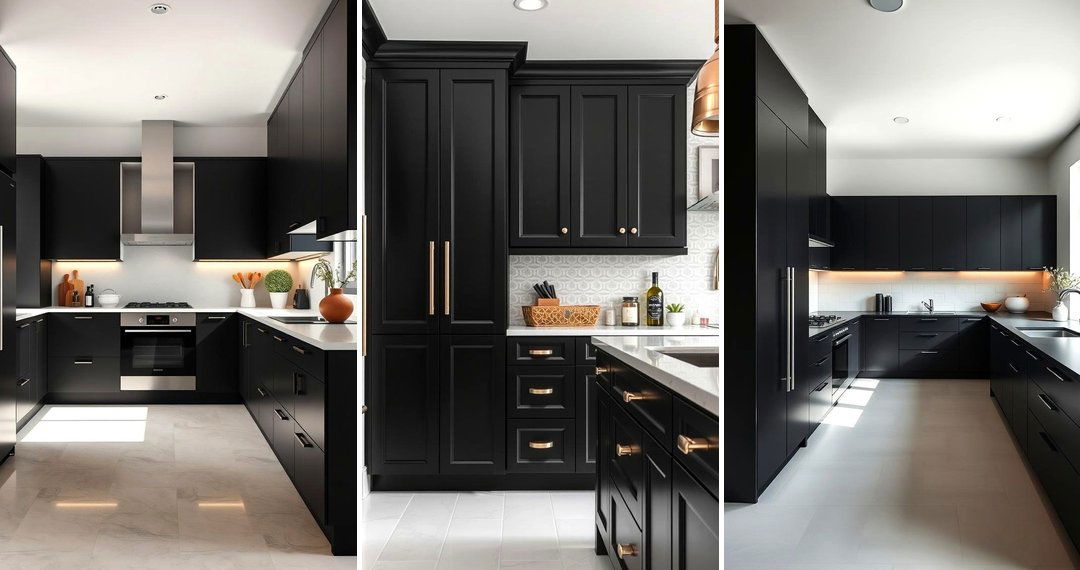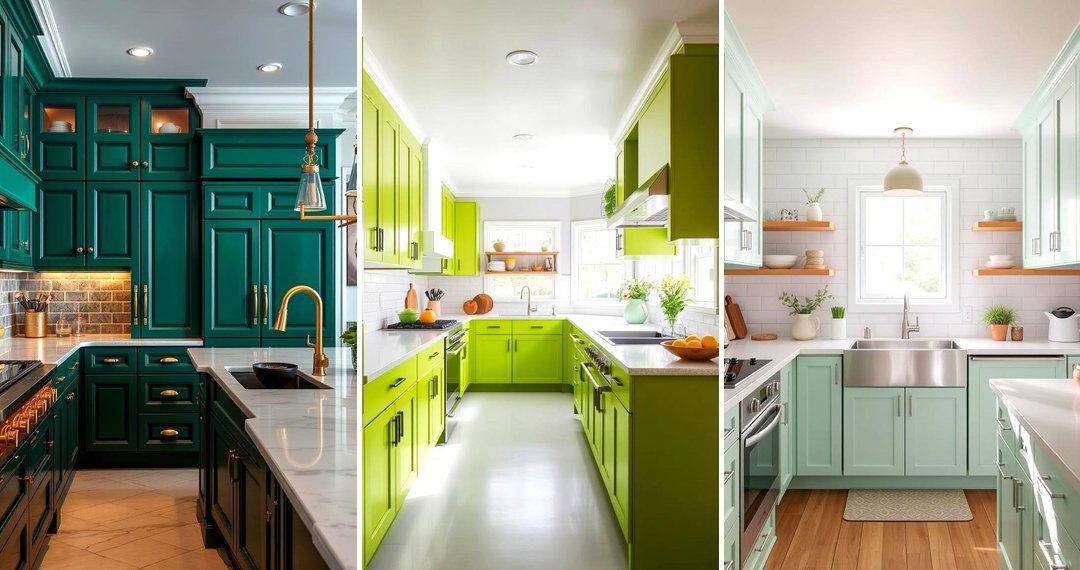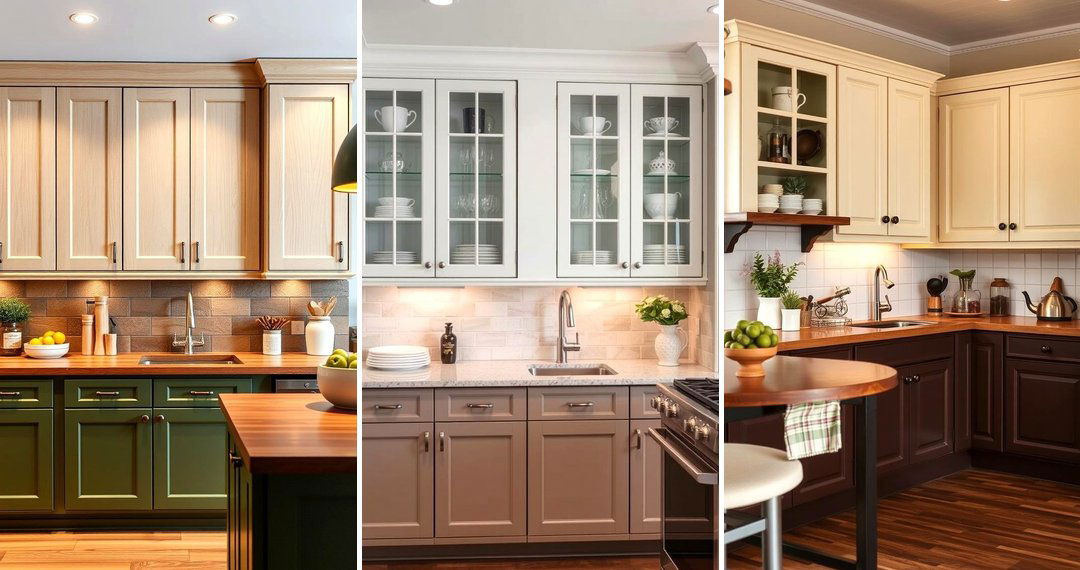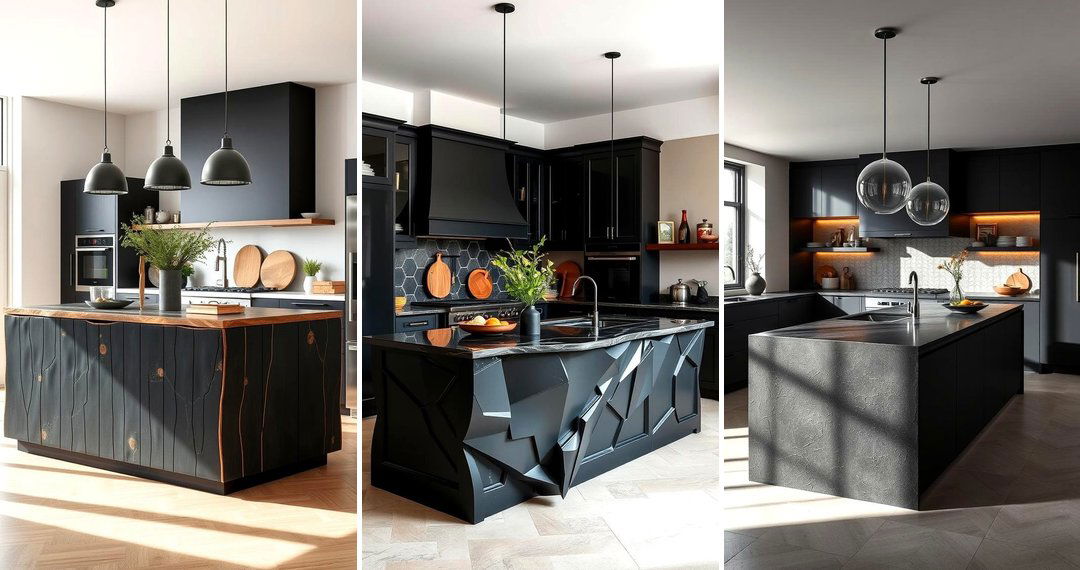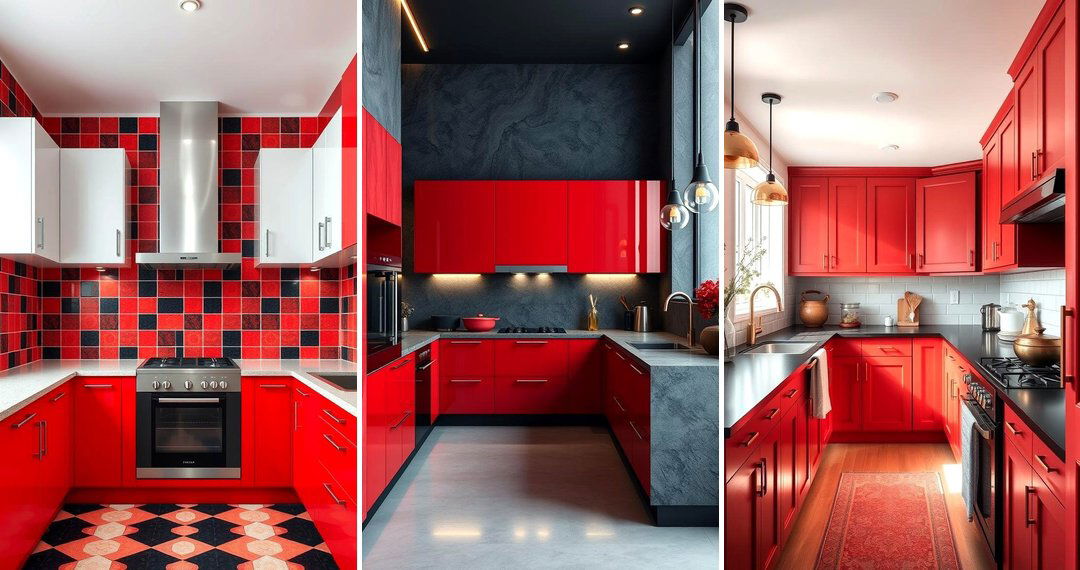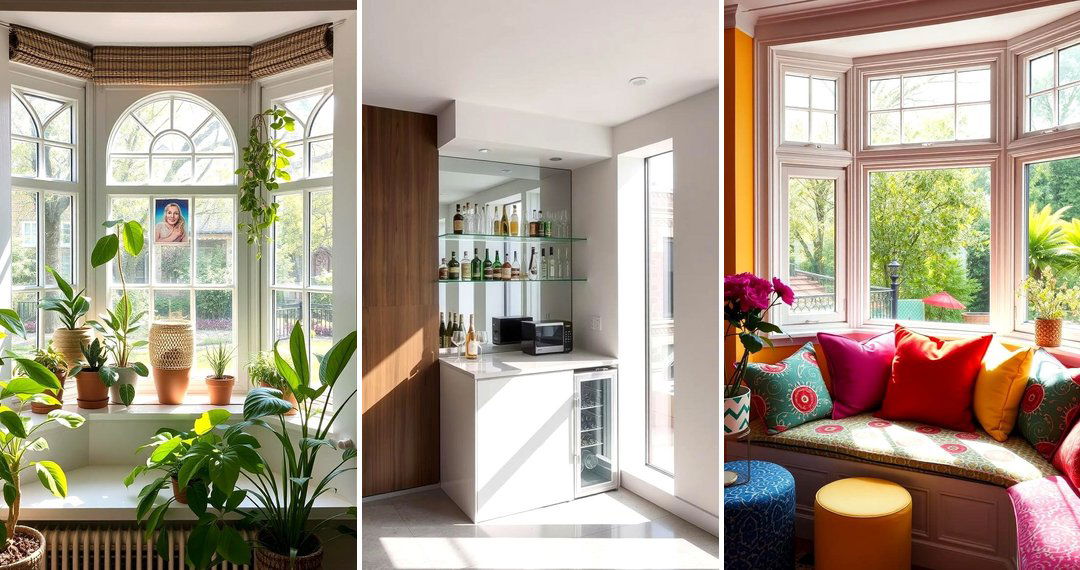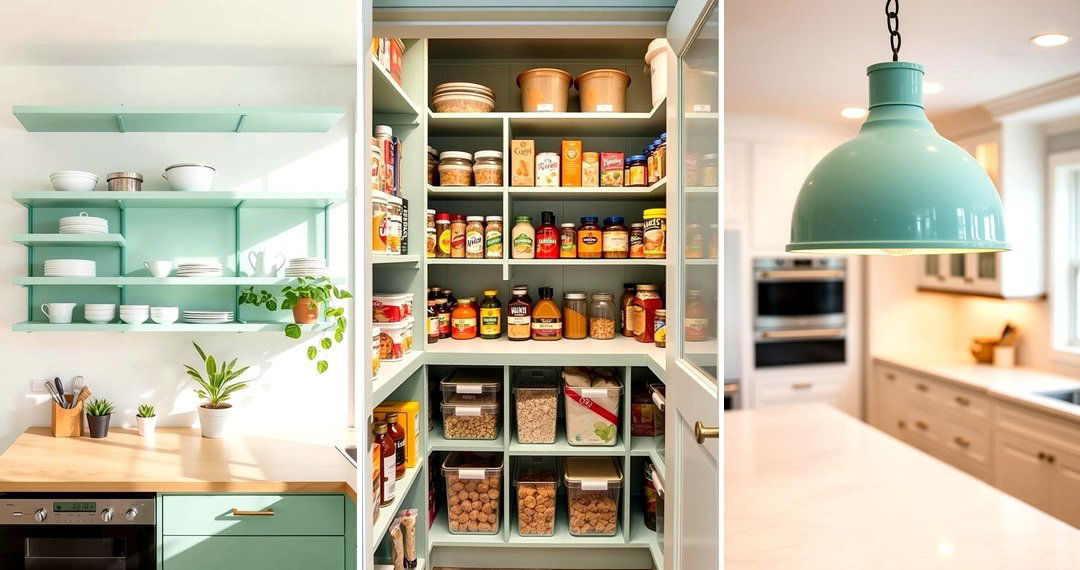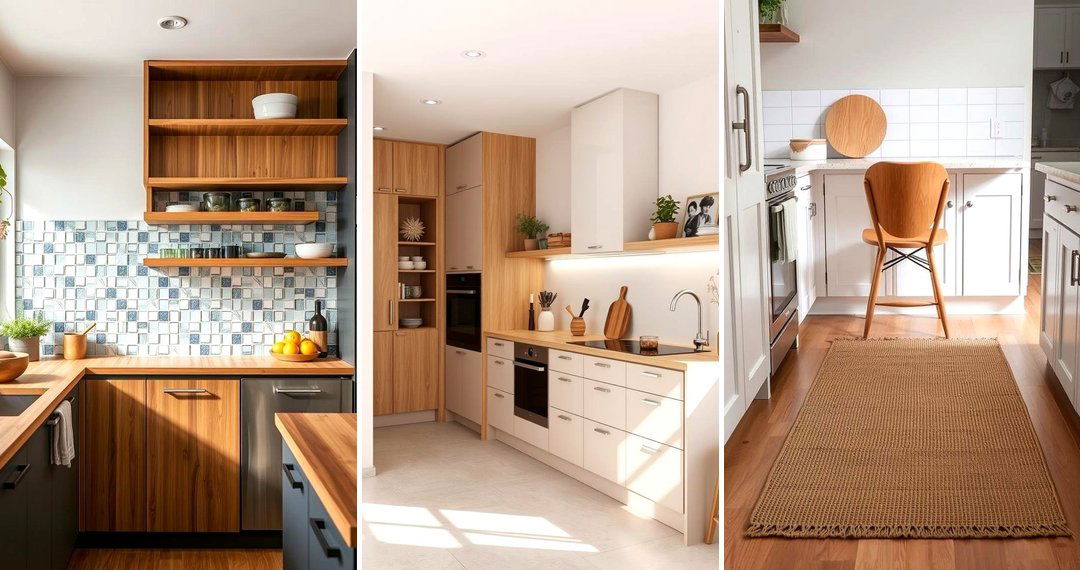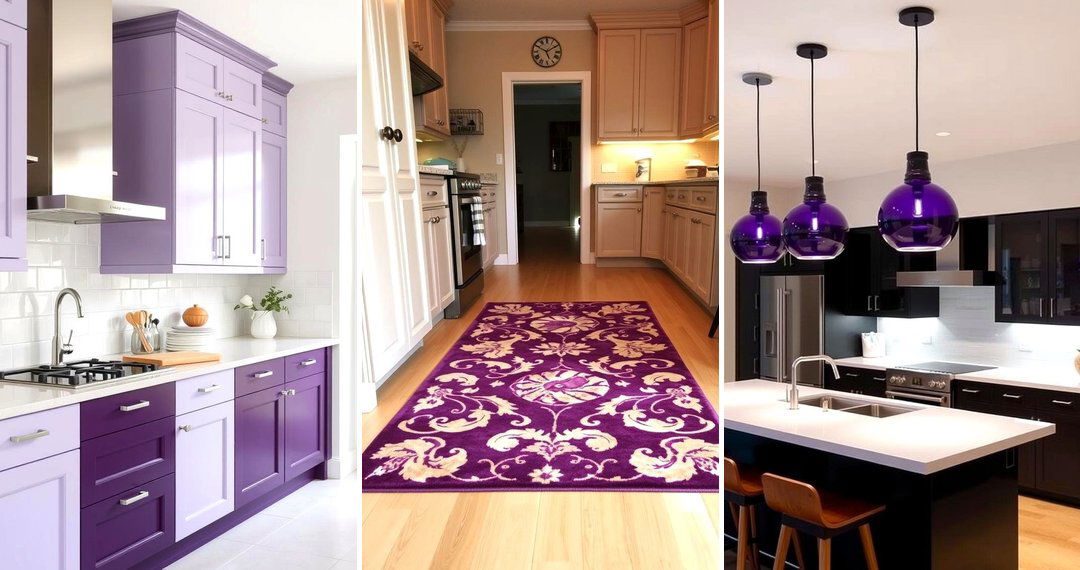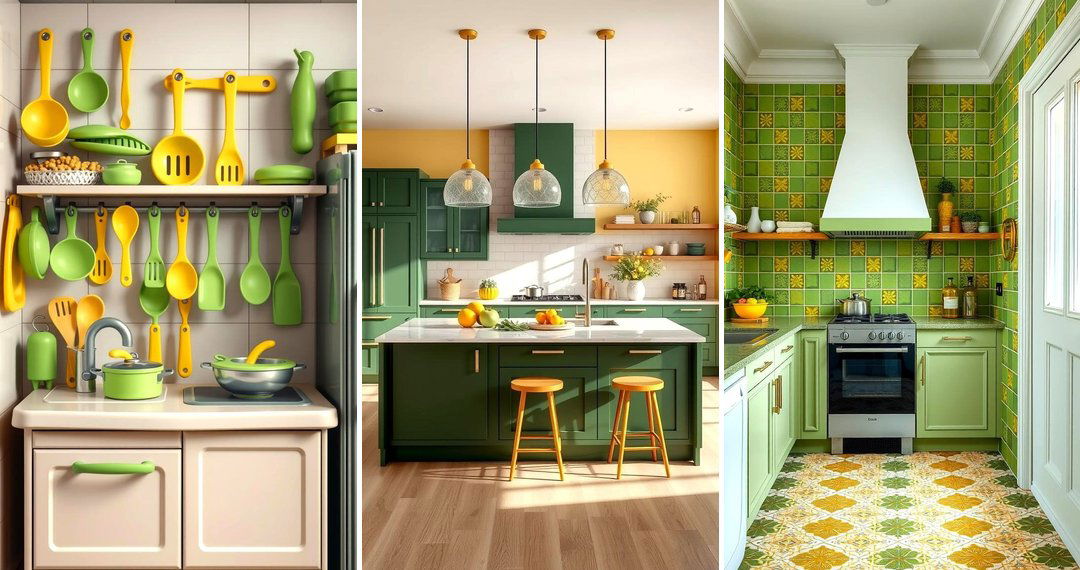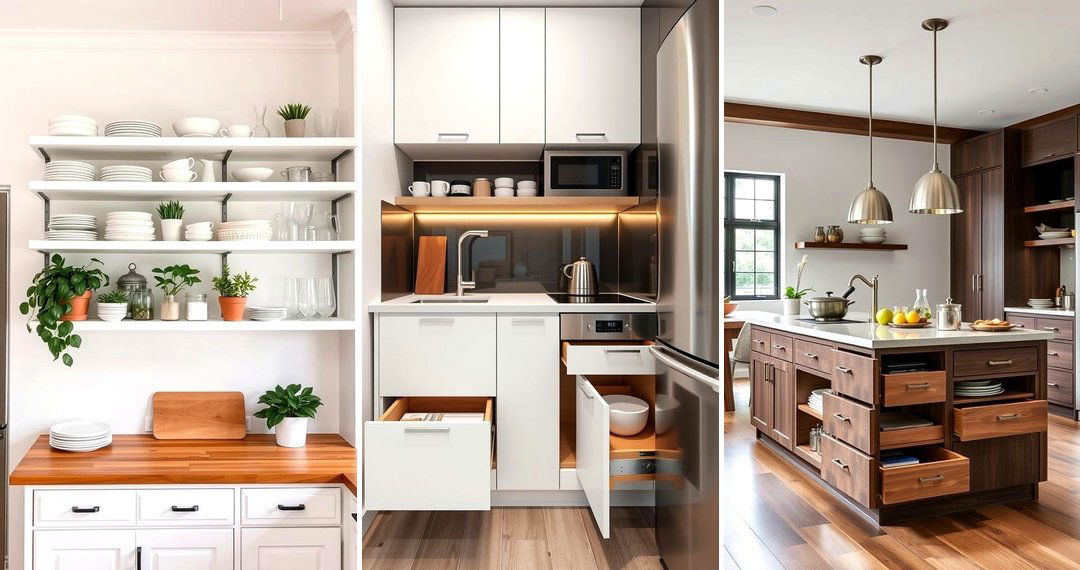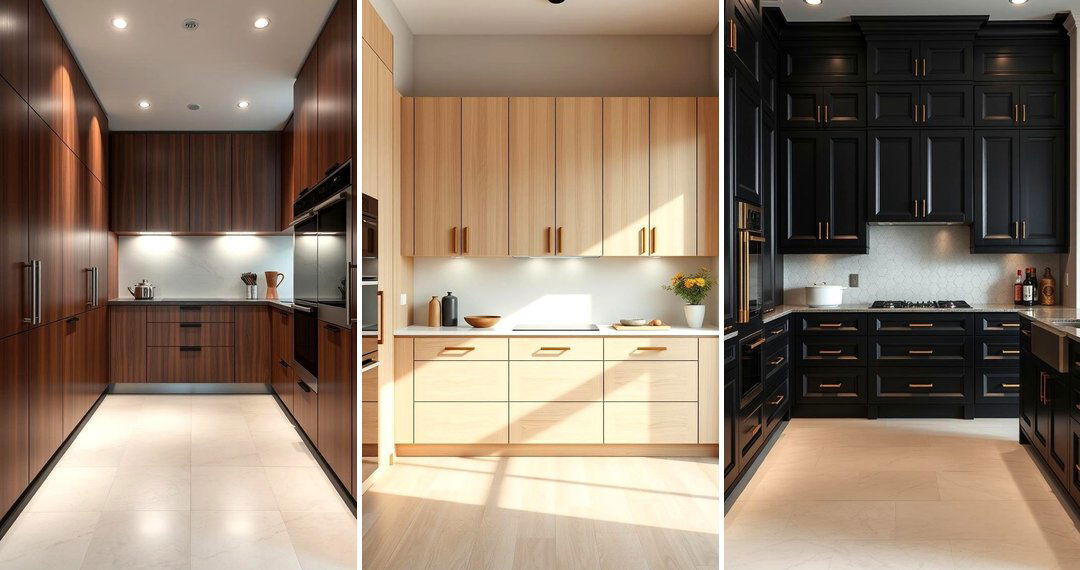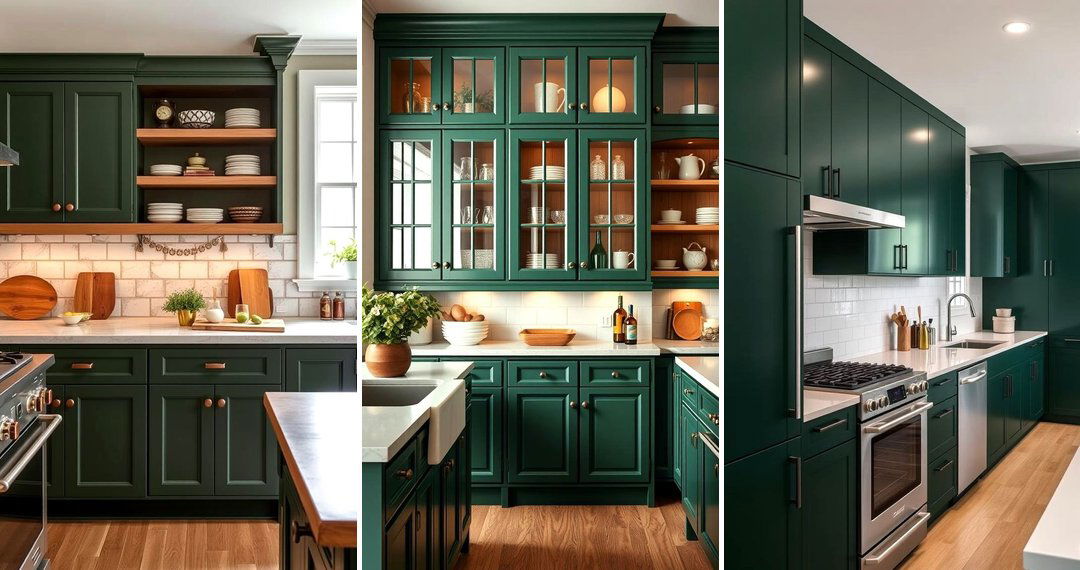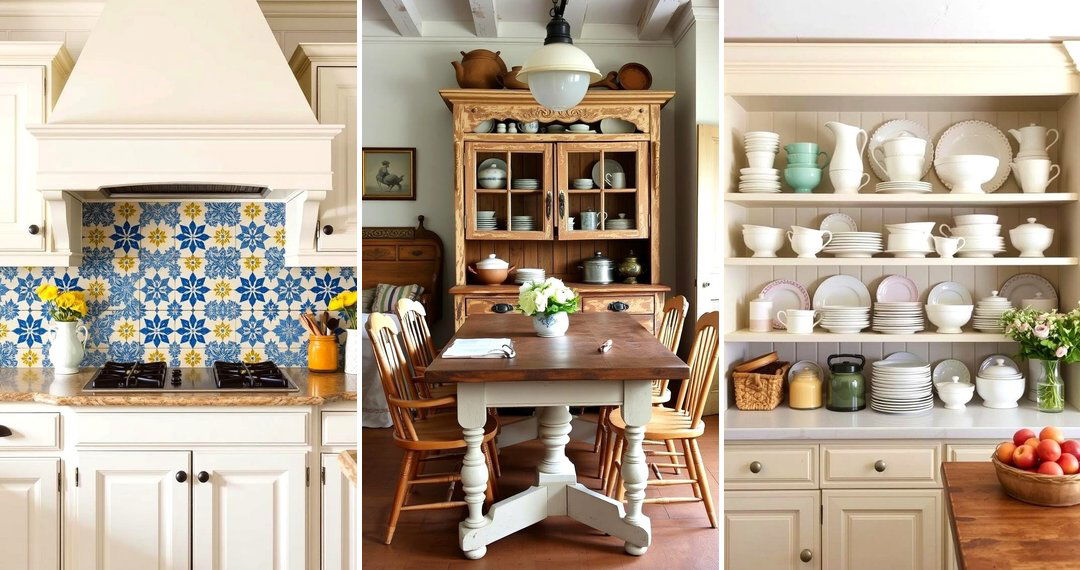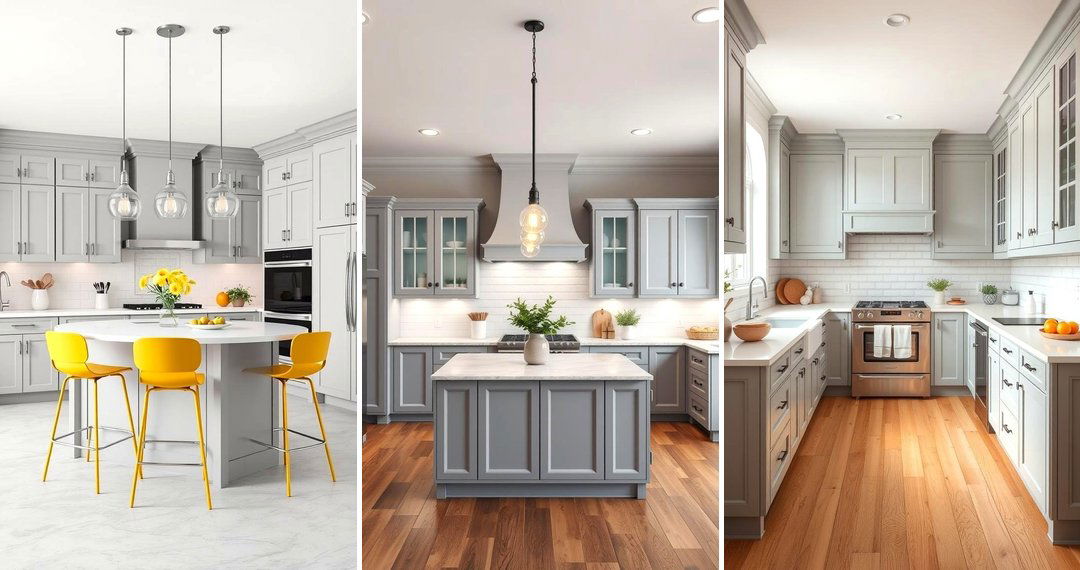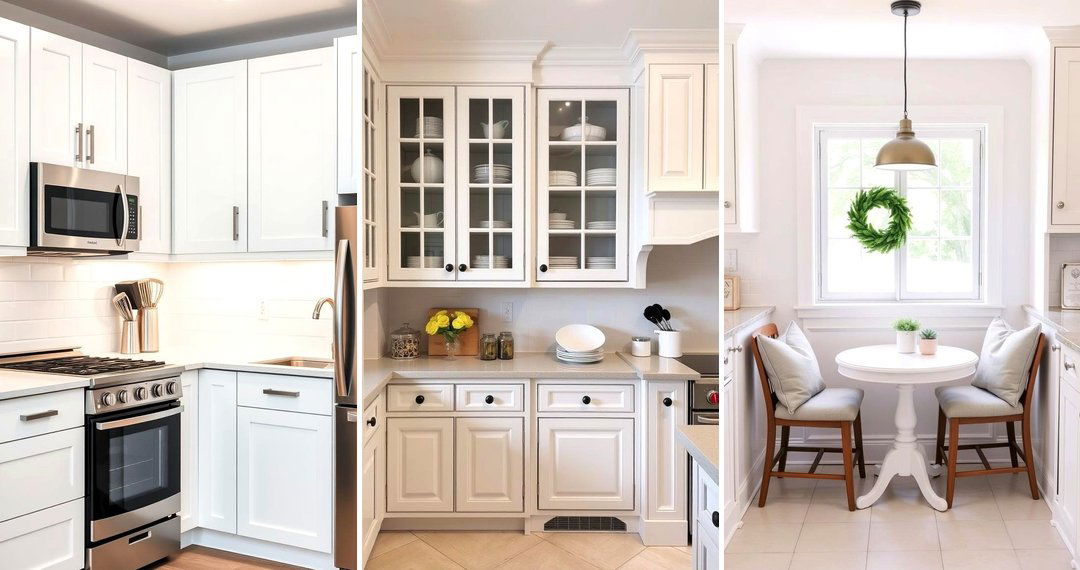Here is your response:
The allure of a Gothic kitchen lies in its dramatic elegance, a captivating blend of history and intrigue that transforms a functional space into a statement of personal style. It's about embracing the darker side of design, not in a gloomy way, but with a sophisticated and timeless aesthetic that speaks of old-world charm and a touch of mystery. A well-executed Gothic kitchen is more than just a place to prepare meals; it's an immersive experience, a space that invites conversation and sparks the imagination. Let's delve into a curated collection of ideas that will inspire you to create your own uniquely captivating Gothic kitchen.
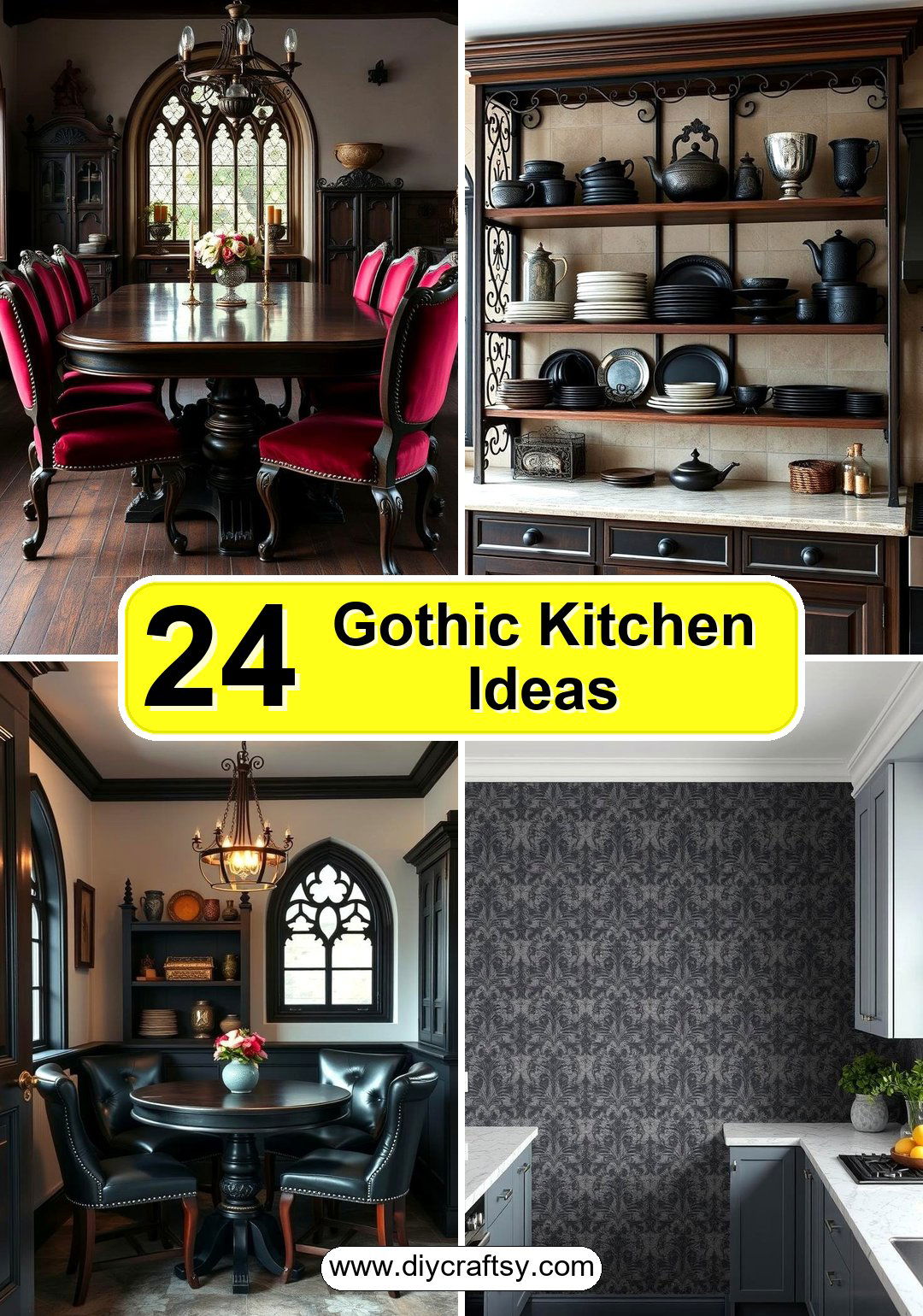
1. Embrace a Deep Color Scheme
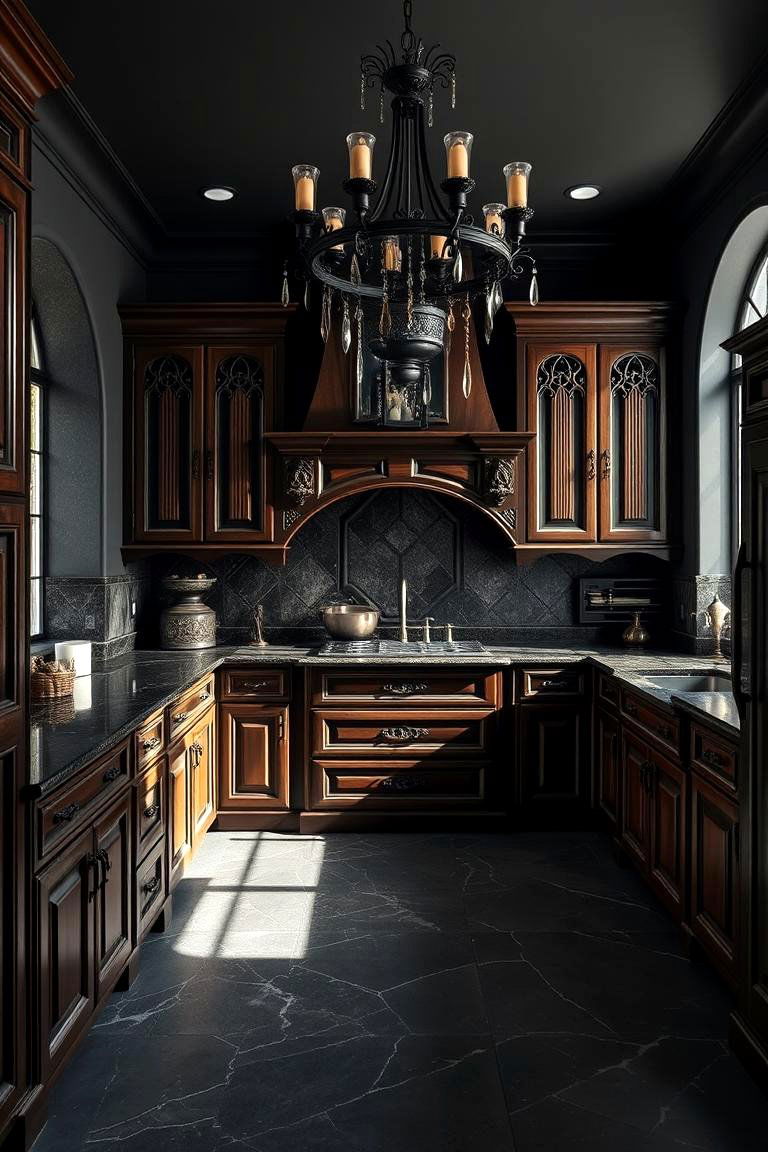
The foundation of a truly Gothic kitchen often lies in its color scheme. Consider immersing your space in a palette of deep and evocative hues. Rich charcoal grays, opulent burgundies, and timeless blacks can immediately transport your kitchen to a realm of dramatic elegance. A significant benefit of this approach is the instant infusion of character and depth into what might otherwise be an ordinary space. For example, envision cabinetry cloaked in a velvety matte black, contrasted beautifully with the cool touch of dark granite countertops. This not only captivates the eye but also lends an air of intimacy and warmth to the kitchen environment.
2. Install Ornate Dark Wood Cabinetry
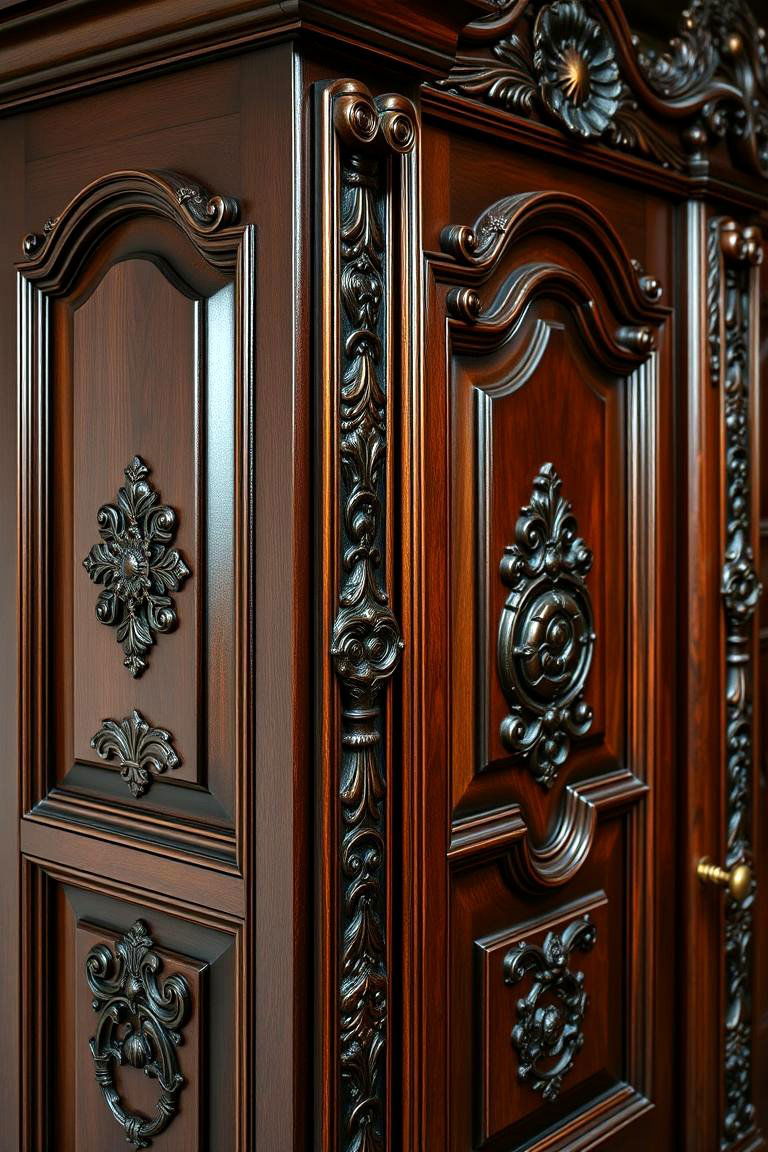
With its intricate carvings and imposing presence, ornate dark wood cabinetry is a cornerstone of Gothic kitchen design. The inherent value lies in the richness and texture that dark woods like mahogany or walnut bring to the space. These cabinets often feature raised panel doors, detailed molding, and perhaps even subtle carvings that speak to a bygone era. Moreover, the substantial feel of solid wood contributes to a sense of quality and permanence. Imagine the visual impact of these stately cabinets, providing ample storage while simultaneously serving as a stunning architectural feature in your kitchen.
3. Feature Stone or Brick Accents
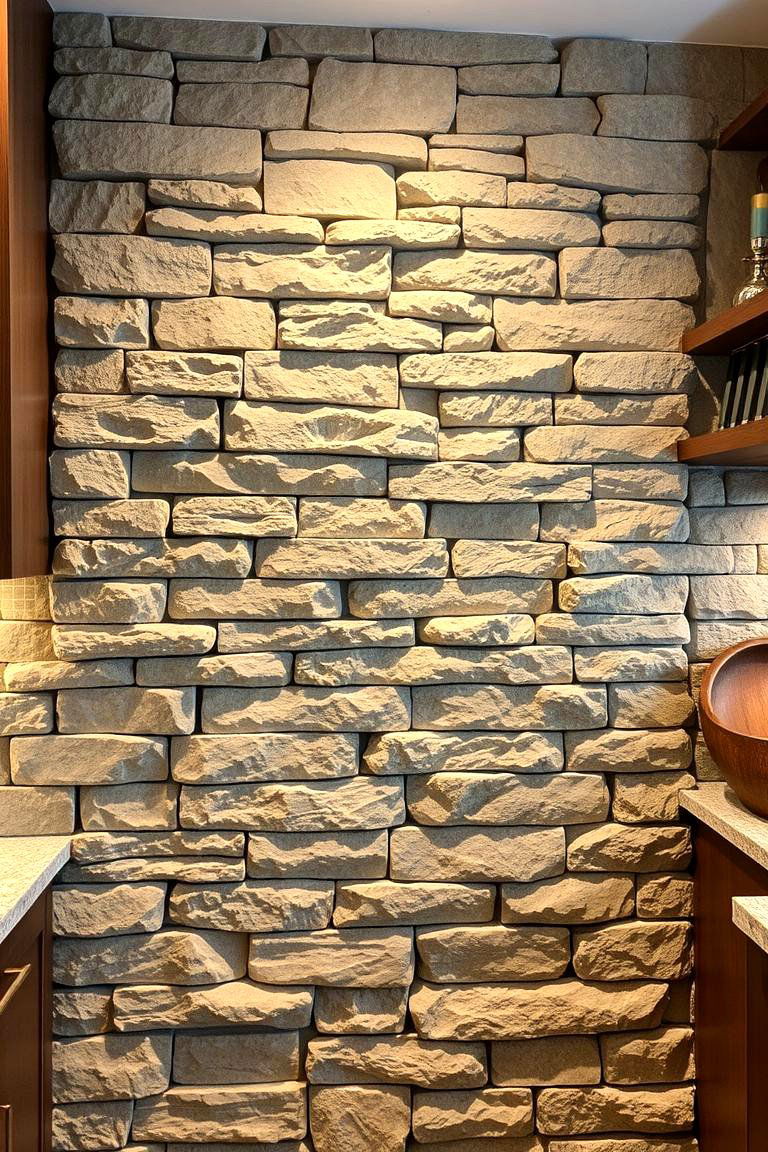
Bringing in natural elements like stone or brick can dramatically enhance the Gothic aesthetic of your kitchen. The key advantage here is the raw, textured beauty these materials offer, evoking the feeling of ancient castles and grand estates. Consider a stone backsplash, a brick accent wall, or even stone flooring to ground the space and add a sense of history. Additionally, these materials are incredibly durable and can withstand the rigors of a busy kitchen. The interplay of the dark cabinetry with the rugged texture of stone or brick creates a captivating contrast that is distinctly Gothic.
4. Incorporate Wrought Iron Elements
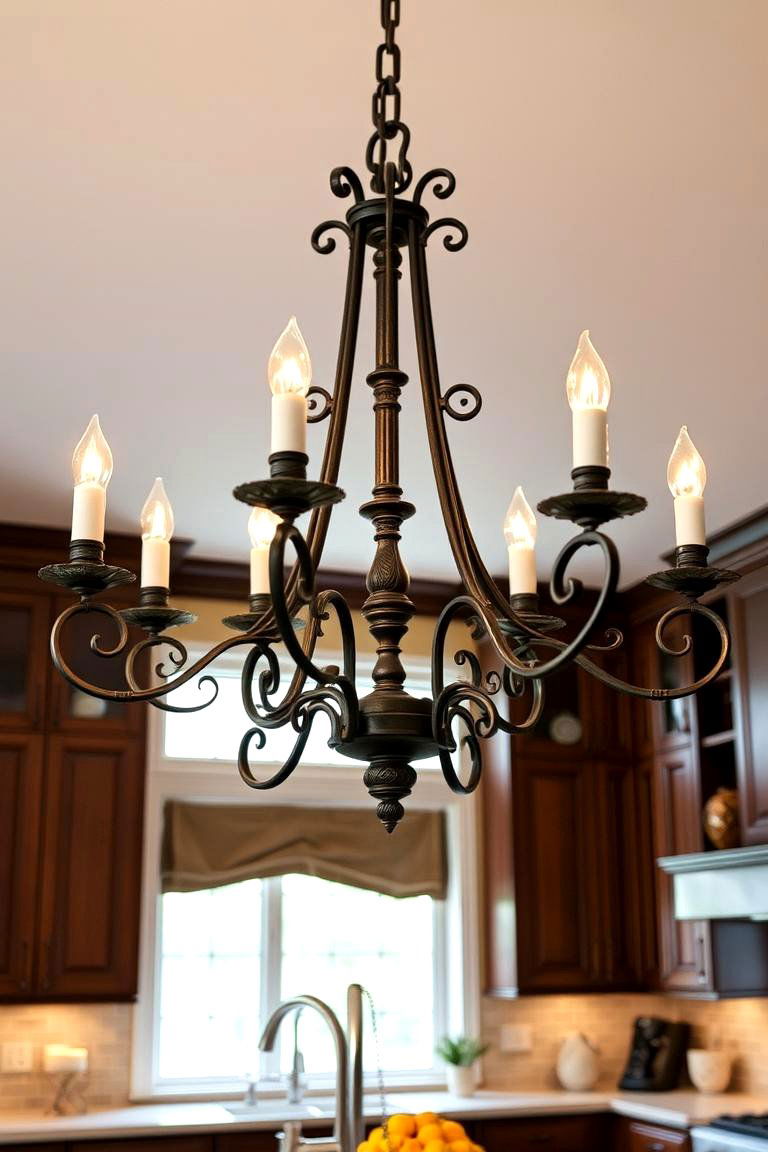
For a touch of intricate detail and old-world craftsmanship, incorporate wrought iron elements into your Gothic kitchen design. This material offers both visual appeal and practical benefits. Think about wrought iron chandeliers casting dramatic shadows, intricately designed pot racks, or even bar stools with wrought iron frames. The strength and durability of wrought iron ensure these pieces will last for years, adding a timeless quality to your kitchen. Furthermore, the delicate yet sturdy nature of wrought iron detailing provides a beautiful contrast to the heavier elements often found in Gothic design.
5. Introduce Dramatic Lighting Fixtures
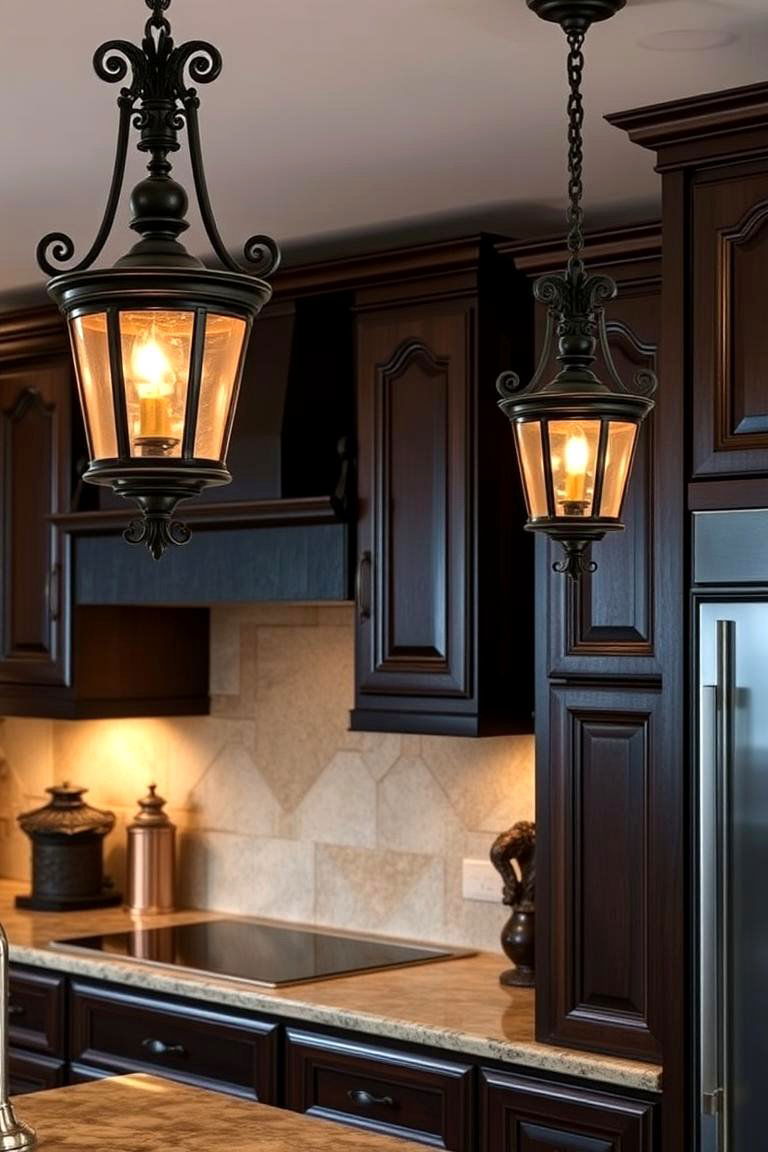
What truly sets a Gothic kitchen apart is its dramatic lighting. Consider statement pieces like elaborate chandeliers with dark metal finishes or ornate wall sconces that cast a warm and inviting glow. The benefit here is the creation of ambiance and the highlighting of key architectural features. Dimmer switches are also essential, allowing you to adjust the lighting to suit different moods and occasions. Imagine the soft, flickering light of strategically placed candles (or safe LED alternatives) adding to the mysterious and enchanting atmosphere of your Gothic kitchen.
6. Opt for Dark Granite or Quartz Countertops
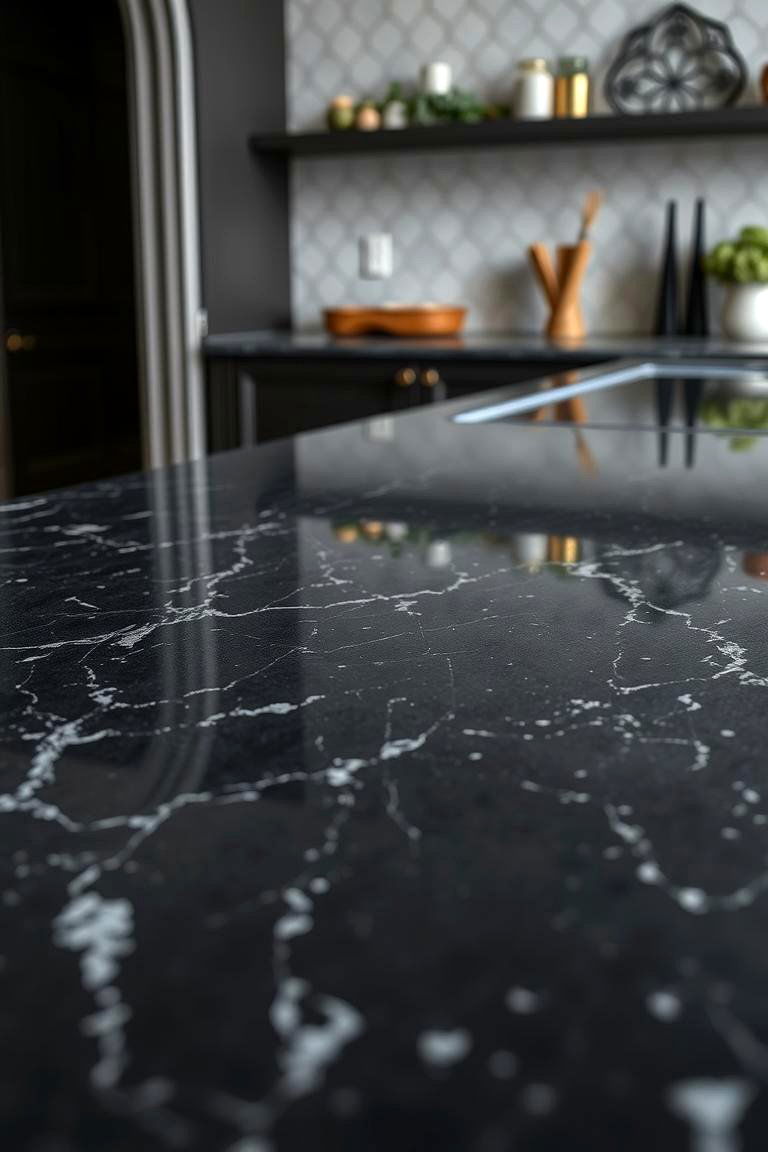
The choice of countertops can significantly impact the overall feel of your Gothic kitchen. Opting for dark granite or quartz offers both durability and a luxurious aesthetic. These materials, in shades of black, deep gray, or even dark brown with subtle veining, provide a sleek and sophisticated surface that complements dark cabinetry beautifully. Moreover, they are easy to clean and maintain, offering practical benefits for a busy kitchen. The smooth, cool surface of these countertops provides a wonderful contrast to the warmer tones of wood and metal often found in Gothic design.
7. Install a Statement Range Hood

Consider making your range hood a focal point by choosing a design that reflects the Gothic aesthetic. A custom-built hood with dark metal accents, perhaps even incorporating some subtle carving or detailing, can add a significant touch of drama to your kitchen. The practical benefit, of course, is effective ventilation, but the visual impact can be transformative. Imagine a grand, imposing range hood serving as a centerpiece above your cooktop, reinforcing the overall Gothic theme of the space.
8. Use Open Shelving with Dark Accents
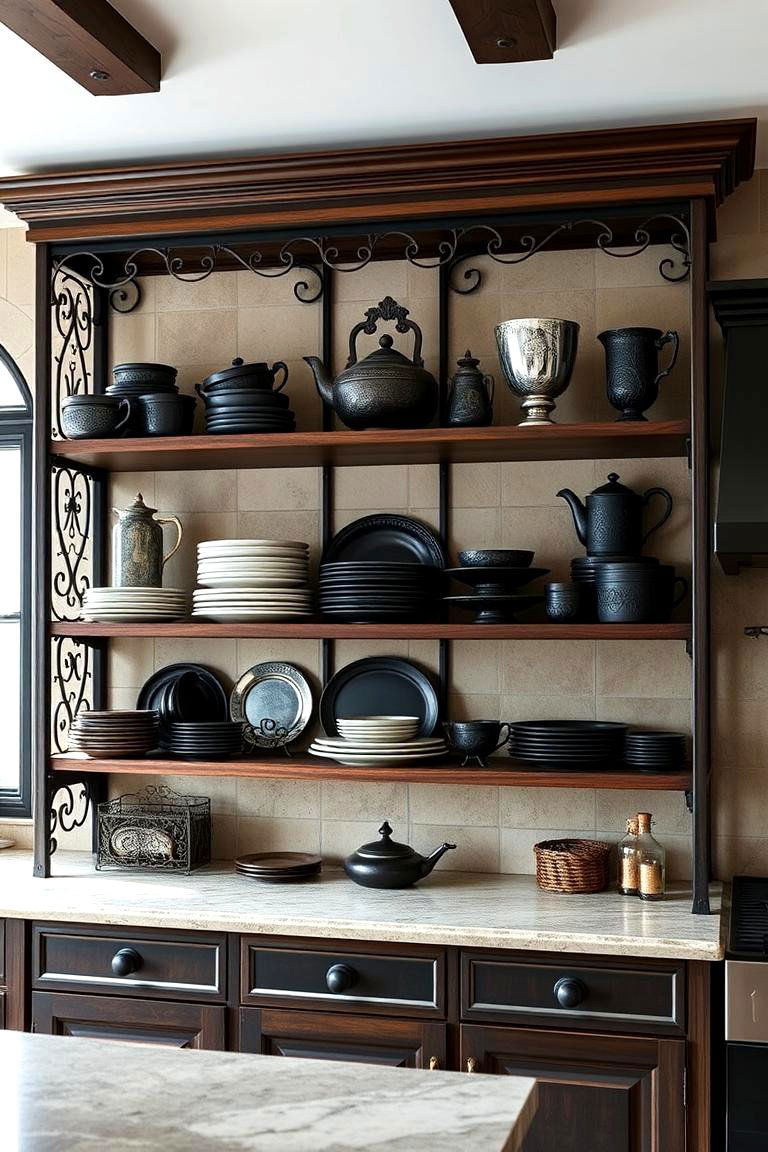
While closed cabinetry is common in Gothic design, incorporating some open shelving can provide an opportunity to display decorative items and add visual interest. The key is to use dark-toned shelves, perhaps made of wrought iron or dark wood, to maintain the overall aesthetic. This offers the benefit of showcasing your unique collection of dark dishware, antique serving pieces, or other Gothic-inspired décor. Arrange items thoughtfully to create vignettes that enhance the mood and character of your kitchen.
9. Incorporate Stained Glass Details
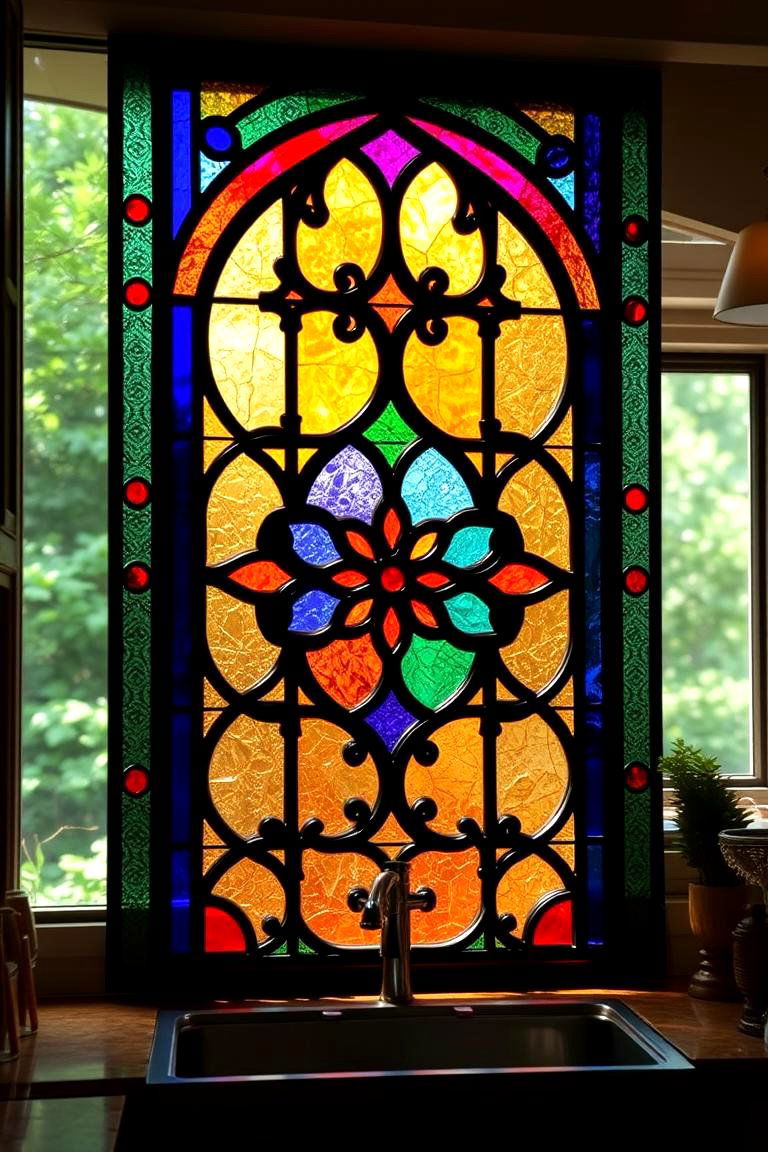
For a touch of medieval elegance and a pop of color, consider incorporating stained glass details into your Gothic kitchen. This could be in the form of window panels, cabinet inserts, or even a decorative hanging piece. The beauty of stained glass lies in the way it filters light, casting colorful patterns across the room and adding an ethereal quality. Furthermore, it offers a sense of privacy while still allowing natural light to enter the space. Imagine the captivating effect of sunlight streaming through a richly colored stained glass window in your Gothic kitchen.
10. Feature Textured Walls

Adding texture to your walls can enhance the depth and visual interest of your Gothic kitchen. Consider options like textured wallpaper with Damask or fleur-de-lis patterns, or even a Venetian plaster finish for a more subtle yet luxurious feel. The benefit here is the creation of a tactile experience that complements the visual elements of the design. These textured surfaces add a layer of sophistication and prevent the space from feeling flat or one-dimensional, contributing to the overall richness of the Gothic aesthetic.
11. Introduce Antique or Vintage Furniture
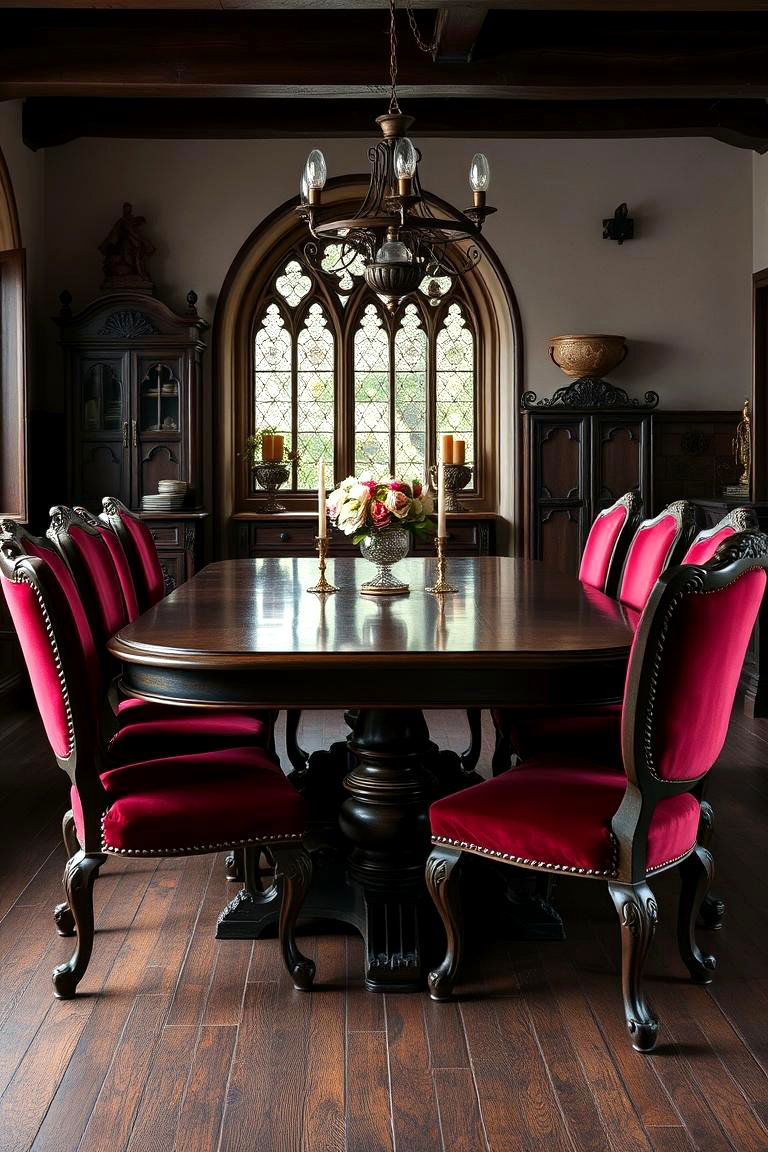
To truly embrace the Gothic spirit, consider incorporating antique or vintage furniture pieces into your kitchen. This could be a dark wood dining table with ornate legs, a vintage sideboard for extra storage, or even a set of antique chairs. The value lies in the history and character these pieces bring to the space, adding an authentic touch of old-world charm. Look for pieces with interesting details, such as carved wood, aged metal, or rich upholstery in dark colors.
12. Display Dark-Colored Cookware and Utensils
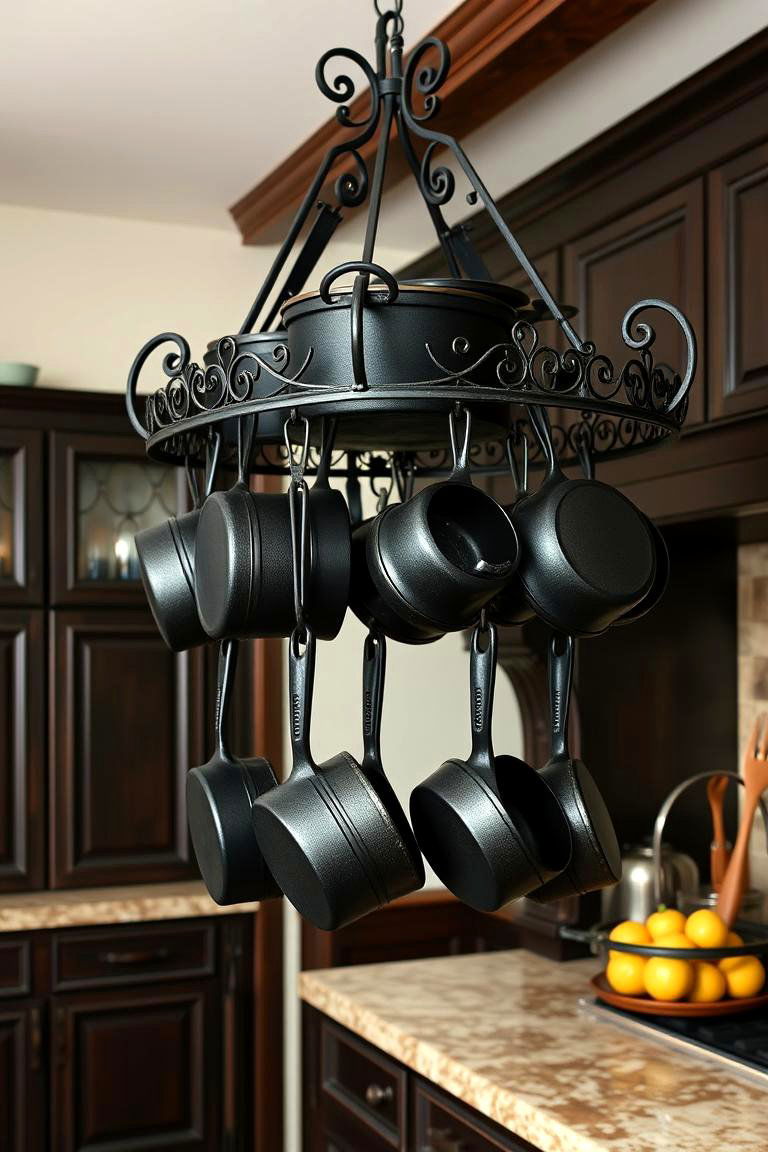
Even your everyday kitchen items can contribute to the Gothic aesthetic. Opt for cookware and utensils in dark colors like black, deep gray, or bronze. Displaying these items on open shelves or hanging them from a pot rack reinforces the overall theme and adds a touch of practicality with visual appeal. The benefit is a cohesive look where even the functional elements of your kitchen contribute to the overall design narrative.
13. Incorporate Natural Wood Elements
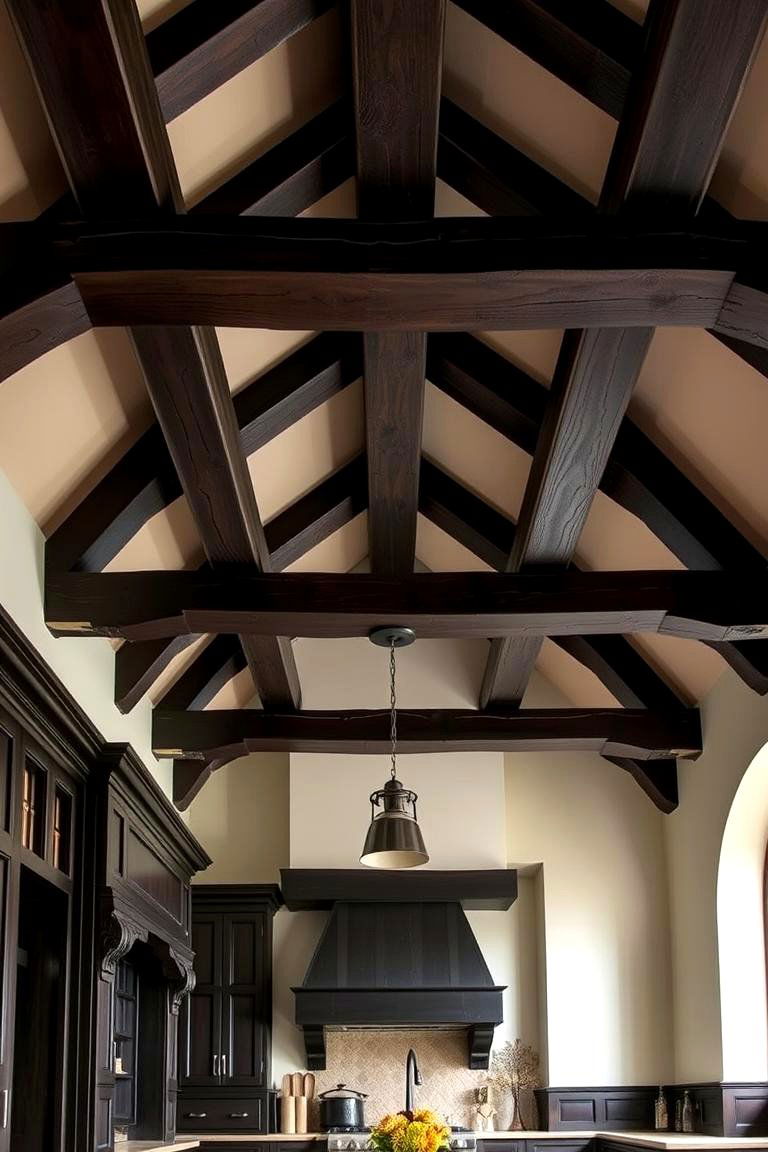
While dark wood cabinetry is key, consider incorporating other natural wood elements throughout your Gothic kitchen. This could include exposed wooden beams on the ceiling, a rustic wooden island countertop, or even wooden cutting boards displayed as décor. The warmth and texture of natural wood provide a beautiful contrast to the darker, more formal elements of Gothic design, adding a touch of organic beauty to the space.
14. Use Dark Metal Hardware

The hardware on your cabinets and drawers might seem like a small detail, but it can significantly impact the overall Gothic feel of your kitchen. Opt for dark metal finishes like wrought iron, antique brass, or oil-rubbed bronze. These finishes add a touch of old-world charm and complement the dark wood and other metallic accents in the space. The benefit lies in the subtle yet impactful way these details contribute to the overall cohesive design.
15. Add Thematic Decorative Accents
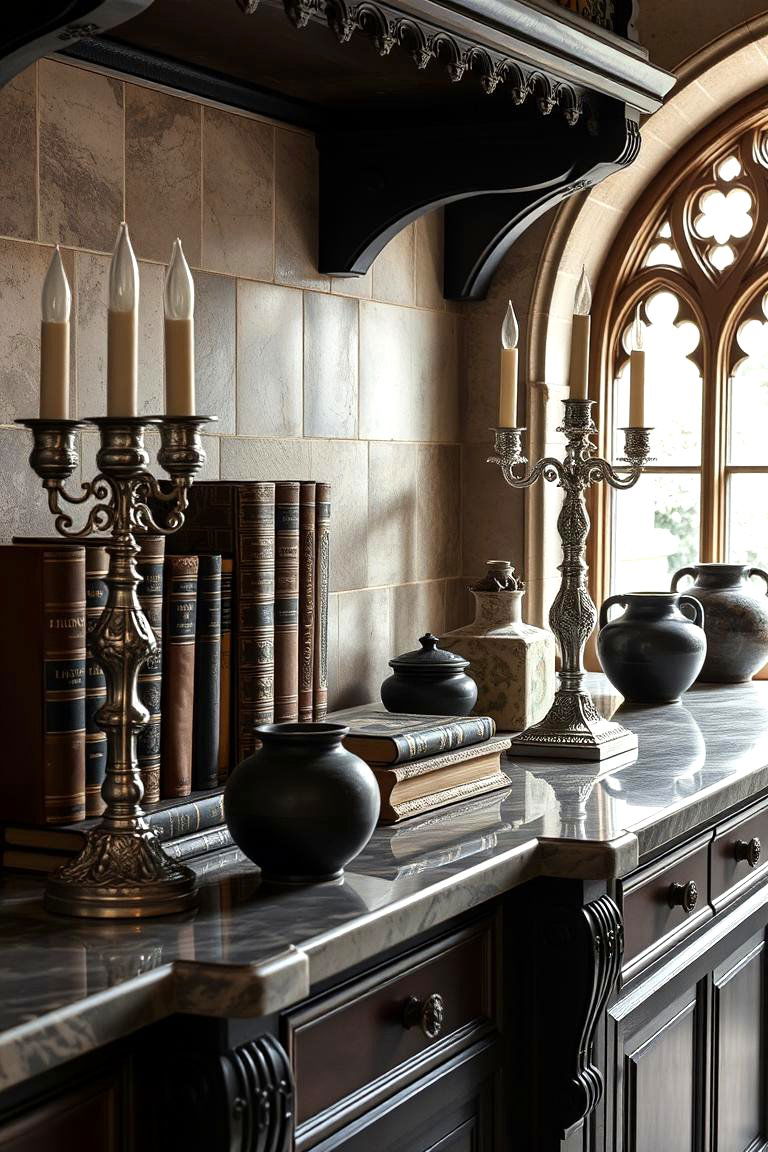
To personalize your Gothic kitchen and enhance its character, incorporate thematic decorative accents. This could include antique books, ornate candle holders, dark-toned pottery, or even framed prints with Gothic-inspired imagery. The key is to choose items that reflect your personal taste while staying true to the overall aesthetic. These accents add layers of visual interest and help to create a space that feels both personal and evocative of the Gothic era.
16. Install a Butler's Pantry with Gothic Flair
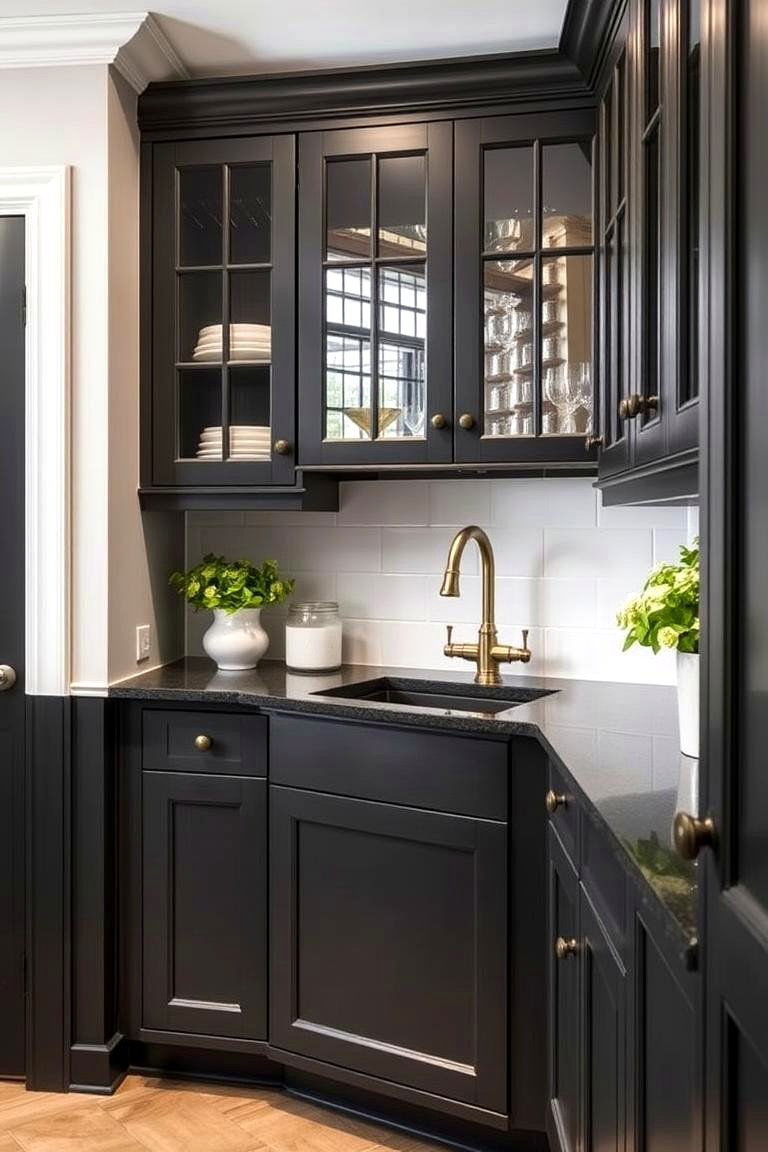
If space allows, consider incorporating a butler's pantry with a distinctly Gothic flair. This could feature dark cabinetry, a stone countertop, and perhaps even a small sink with an antique-style faucet. The benefit is not only the added storage and workspace but also the opportunity to create a separate yet cohesive space that enhances the overall Gothic ambiance of your kitchen area.
17. Incorporate Dramatic Draping
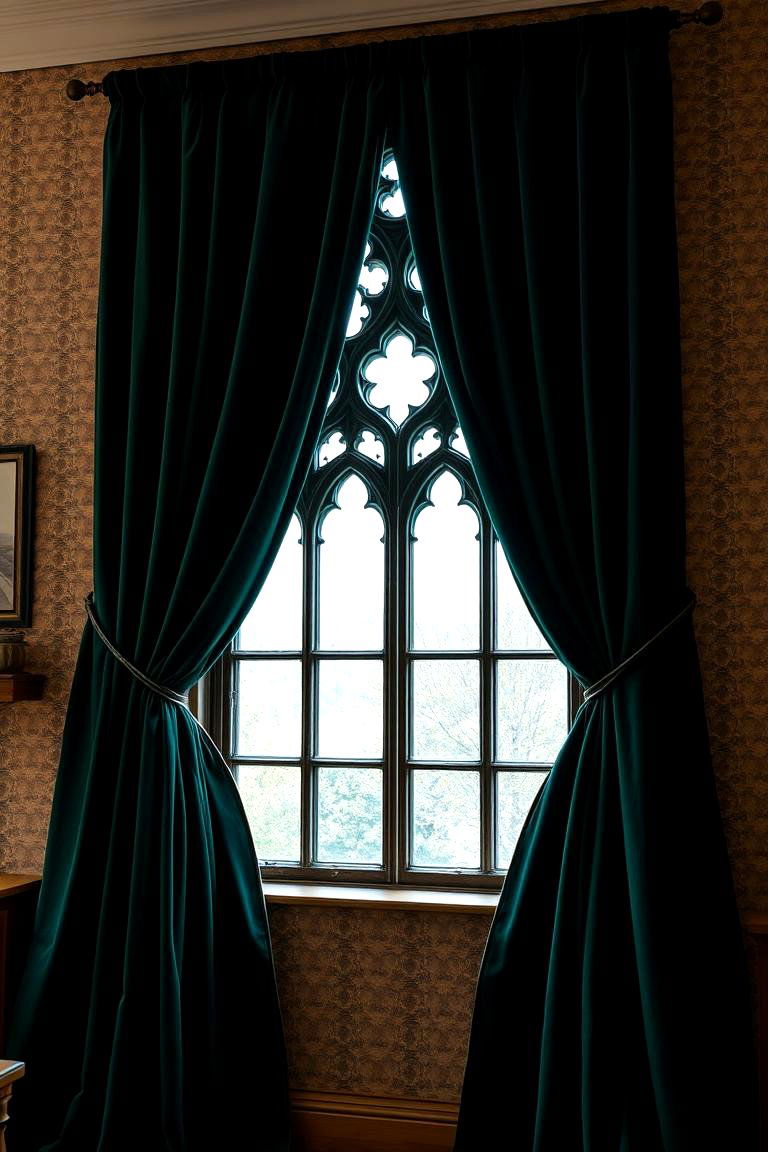
While not always traditional in kitchens, incorporating dramatic draping in the form of heavy, dark-colored curtains or valances can add a touch of Gothic grandeur. Consider using luxurious fabrics like velvet or brocade in deep jewel tones or rich blacks. The benefit is the added texture and visual drama these window treatments provide, enhancing the overall sense of opulence and mystery in your Gothic kitchen.
18. Feature a Dark Farmhouse Sink
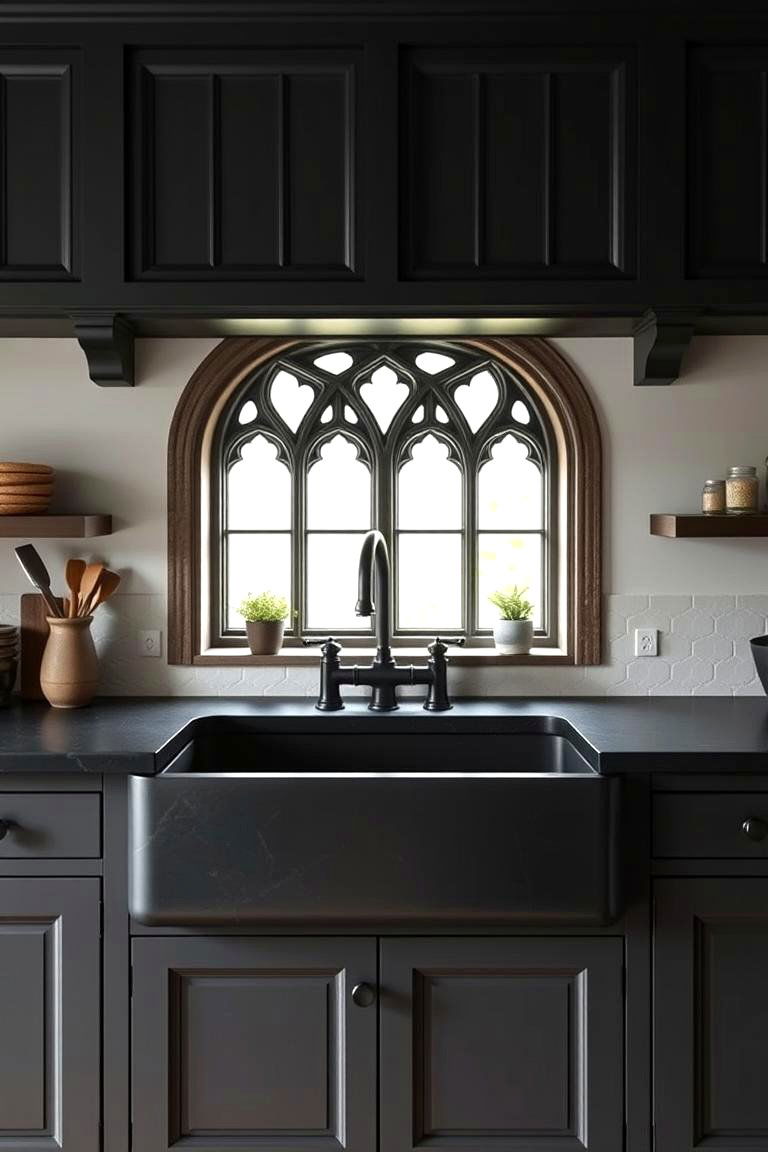
A dark-colored farmhouse sink can be a striking addition to a Gothic kitchen. Opt for a material like cast iron in a deep charcoal gray or black. The large, exposed front of a farmhouse sink adds a touch of rustic charm while still fitting within the overall aesthetic. The practical benefit is the generous size and functionality of these sinks, making them ideal for a busy kitchen.
19. Create a Cozy Dining Nook

If your kitchen has space for a dining area, create a cozy nook with a Gothic-inspired table and chairs. A dark wood table with ornate details, paired with chairs upholstered in a rich, dark fabric, can create an inviting and dramatic space for meals. Consider adding a small chandelier or wall sconces above the table to further enhance the ambiance.
20. Install Dark Flooring

The flooring in your Gothic kitchen should complement the overall dark and dramatic aesthetic. Consider options like dark hardwood floors, slate tiles, or even dark-colored concrete. These materials provide a solid foundation for the design and contribute to the overall sense of richness and depth. The durability and ease of maintenance of these flooring options also offer practical benefits for a kitchen environment.
21. Incorporate Subtle Skull Motifs (Tastefully)
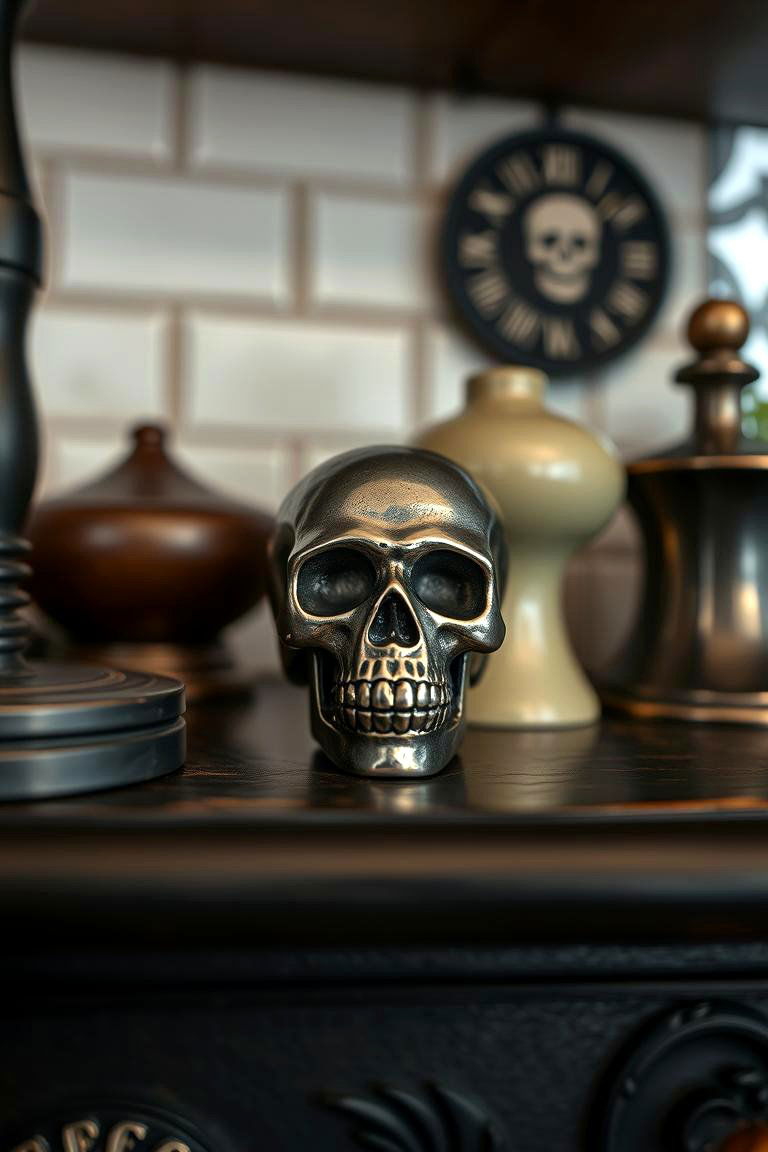
For a subtle nod to the darker aspects of Gothic design, consider incorporating skull motifs in a tasteful and non-offensive way. This could be in the form of decorative accents like small figurines, artwork, or even subtly patterned textiles. The key is to use these elements sparingly and with intention to enhance the theme without becoming overly macabre.
22. Use Candlelight (Real or Faux)

Nothing evokes a sense of Gothic atmosphere quite like candlelight. Incorporate candle holders in various styles and sizes throughout your kitchen. For safety and convenience, consider using LED candles that flicker realistically. The soft, warm glow of candlelight adds a layer of mystery and romance to the space, perfect for creating a truly immersive Gothic experience.
23. Display Antique Books and Curiosities

Adding a touch of intellectual intrigue can further enhance your Gothic kitchen. Display antique books on shelves or countertops, along with other curiosities like vintage scientific instruments or unique found objects. These items add personality and depth to the space, suggesting a sense of history and a connection to the past.
24. Create a Dramatic Backsplash
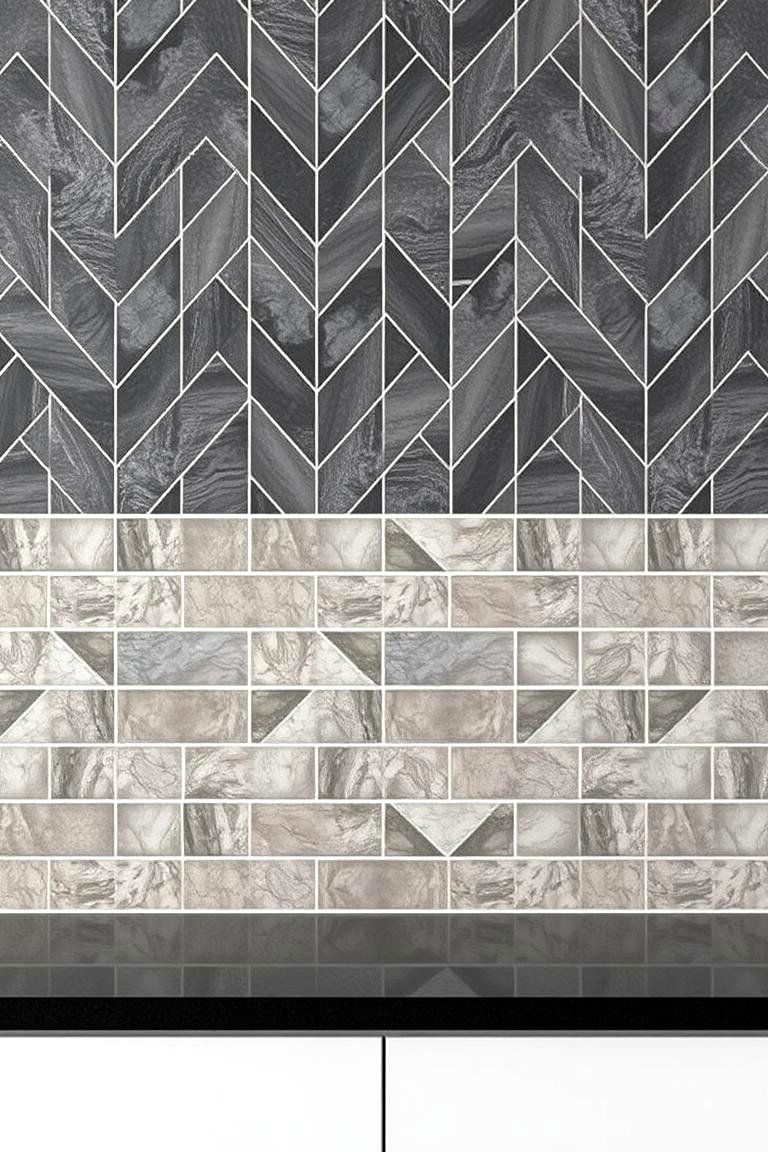
Your backsplash offers another opportunity to showcase the Gothic aesthetic. Consider using dark tiles, perhaps with a metallic or textured finish, arranged in an interesting pattern. Alternatively, a stone or brick backsplash can also work well. The benefit is the visual impact a well-designed backsplash can have, drawing the eye and adding another layer of detail to your Gothic kitchen.
Conclusion:
Crafting a Gothic kitchen is about embracing a bold and dramatic aesthetic, where deep colors, ornate details, and a touch of mystery converge to create a truly unique and captivating space. From the rich textures of dark wood and stone to the intricate details of wrought iron and the warm glow of dramatic lighting, each element plays a crucial role in evoking the desired atmosphere. By thoughtfully incorporating these ideas, you can transform your kitchen into a sophisticated and timeless haven that reflects your individual style and appreciation for the enduring allure of Gothic design. Exploring these 24 Gothic Kitchen Ideas offers a fantastic starting point for creating the kitchen of your dreams.


